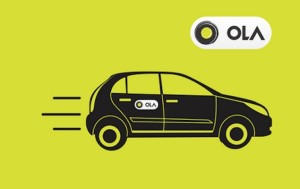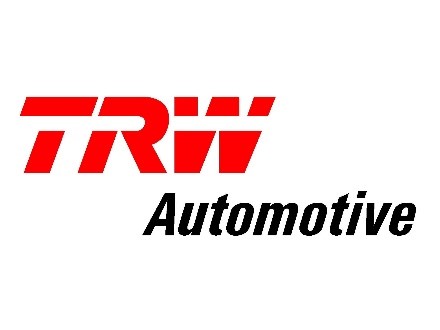The Competition Commission of India (CCI) vide its order dated 19.07.2017 has dismissed allegations of predatory pricing against OLA (ANI Technologies) made by two Bangalore based radio taxi service providers, Fast Track (Fast Track Call Cab Ltd.) and Meru (Meru Cab Company Pvt. Ltd) (‘Informants’).
The Informants had alleged in 2015 that OLA had abused its dominant position in the relevant market of “radio taxi services in the city of Bengaluru” by offering heavy discounts to the passengers and incentives to cab drivers associated with them which amounts to predatory pricing in contravention of Section 4(2)(a)(ii) of the Competition Act, 2002 (‘Act’). It was alleged that the pricing strategy followed by OLA had distorted fair competition in the market, resulting in business loss to equally efficient but small players like the Informants and foreclosing market to potential entrants. Vide orders dated 24.04.2015 and 30.09.2015, CCI referred the two complaints for investigation to the Director General (DG) after finding that prima facie OLA appeared to be in a dominant position due to its high market share. The DG conducted a common investigation in both the complaints which were clubbed by CCI.
The joint investigation report dated 12.04.2016 submitted by the DG to CCI however did not find that OLA was in a dominant position in the relevant market which was identified as the “market for services of radio taxi in Bangalore”. This was primarily due to the growth in market share of Uber (which entered the market in August 2013) from 1-2% in 2013-14 to 20-22% in 2015-16. DG also found that from March 2015 onwards Uber had maintained the second position after OLA in the relevant market in Bangalore on the basis of nearly 1200% growth in trip size of Uber as compared to about 63% of OLA in the same period from January to September 2015. This demonstrated that OLA was not able to hold its high market share after the entry of Uber in the market which was found to be contrary to the position of dominance by the DG. Since OLA was thus not found to be dominant in the said relevant market there was no question of its alleged below cost pricing being “predatory” under the scheme of section 4 of the Act.
The Informants challenged the above findings of the DG investigation and made exhaustive written objections to the DG investigation report before the commencement of inquiry before CCI.
However, the CCI after undertaking a detailed analysis of the relevant market, agreed with the findings in the DG investigation and closed the case against OLA under section 26(6) of the Act holding that it does not hold a dominant position in the relevant market and therefore there can not be any abuse of predatory pricing . The following are the primary allegations and the CCI’ s findings on the same:
High market share of OLA
With regard to OLA holding a dominant position in the market, the Informants alleged that OLA held a high market share in the relevant market throughout the period of investigation. It was contented that a market share of more than 50% of an entity creates a presumption of dominance. The CCI however held that market share is merely one of the indicators of dominance enshrined in Section 19(4) of the Act and that the same cannot be seen in isolation. It was observed that high market shares particularly in the case of new-economy/hi-tech markets may turn out to be temporary, particularly in the early years of introduction of a new technology. Moreover, the concept of dominance being linked to the ability of a firm to be able to behave independent of competition was not found here due to the entry of Uber in the said market , which , provided enough competitive constraint on OLA.
The CCI held that the emphasis of Section 19(4) of the Act is on the size and importance of the competitors, rather than the market share of the competitors. Concomitantly, market shares are to be interpreted in the light of all relevant market conditions.
Barriers to entry
On the issue of high barriers to entry posed by network effects in the platform-based business model of OLA, the CCI acknowledged the fact that in two-sided markets, network effects may enable a large platform/network to become dominant and insulate itself from potential competition on account of potential new entrants finding it difficult to challenge the entrenched incumbent.
However, in the present case, the CCI observed that both Uber and OLA were found to be aggressively competing with each other to attract participants’ i.e. drivers and riders on either side. It was observed that despite OLA having the largest network, the network effect was not strong enough to deter entry and rapid expansion of Uber. Further, it was observed that there are no significant costs preventing consumers from switching between different radio taxi apps. As per the CCI, the absence of switching costs between different networks in the relevant market limits the constraints exerted by the established network on new entrants.
Significantly, the CCI noted that competition in the relevant market is still unfolding and the market still has not tipped in favour of the OLA as claimed by the Informants. The CCI also differentiated the present platform based model in the radio taxi market and observed that as opposed to the erstwhile asset/ownership based players, platform based players find it easier to enter the market than traditional entrants given the reduced upfront costs of starting a business.
On the issue of the massive amount of capital mobilized by OLA acting as a barrier to entry, the CCI observed that in new economy sectors, the traditional concept of ‘capital requirements’ may not be applicable in totality.
Allegations of predatory pricing
With respect to the contention that conduct of predatory pricing itself is an evidence of dominance, the CCI observed that new entrants to a market commonly engage in practices such as below cost pricing, loyalty discounts etc. to gain a toehold in the market and holding them dominant based on simple observation of conduct may have the undesirable result of chilling competition.
The CCI also analyzed the pricing strategies adopted by different players in the market and held that the pricing strategy adopted by OLA seems to be a reactive strategy to Uber’s aggressive pricing. Additionally, the financial losses incurred by Uber in the market remained substantially higher than OLA’s which as per the CCI was indicative of the competitive constraint put by Uber on the OP in the relevant market.
Further, the CCI disagreed with the Informants’ allegation that the low prices of OP was not because of cost efficiency, but because of the funding received from private equity players on the ground of insufficient evidence. The CCI held that there is no evidence that the access to such funding was inequitable and that the market for financing was not competitive.
Lastly, the CCI marked its reluctance to intervene in a market which had yet to evolve fully. It was noted that the premature interference of the competition regulator in a nascent market situation may be counter-productive.
Comments
The order of CCI exemplifies the growing use of economic analysis in decision making in India. CCI has undertaken a detailed analysis of the intricacies and synergies at play in the radio taxi market and the effect of disruptive technology and network effects on a two-sided marketplace (i.e. where an intermediary is engaged in the activity of connecting two different and distinct ends of the supply chain, by charging a fee or consideration for such a connection). Further, it augers well for businesses that the CCI championed the idea of minimal intervention in a nascent market situation and recognized that any such unwanted intervention will be counterproductive.










